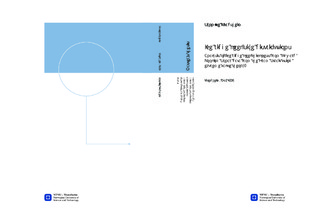| dc.description.abstract | The present thesis explored sea ice ridges in the Fram Strait from data collected at 79 degrees N, 65 degrees W in 2006/2007 by an Upward Looking Sonar instrument, IPS4, and used extreme value analysis to provide an estimate of how deep sea ice ridges could be in this area, and its return period. Ice in the Fram Strait originate from different regions in the Arctic Ocean and is therefore representative of the ice ridge distribution in the Arctic.Ice ridges were identified using the Rayleigh method, choosing a threshold value of 2.5 m and a minimum draft value of 5 m.The mean keel draft value was found to be 7.7 m. The shallowest keel observed had a draft of 5.0 m, while the deepest keel was 24.97 m deep. Extreme value analysis was performed on the data collected to find estimates of extreme values of ice ridge keel draft, and its 100-year return level.The shape parameter in the Generalized Pareto distribution was estimated to be close to zero, which qualified for a reduction to the Exponential distribution. The 100-year return level was estimated to be in the range of 37 45 m with the Generalized Pareto distribution and the Exponential distribution. The Weibull distribution was also used in the same analysis, but gave a much lower result with a 100-year return level of 29 m. The fraction of ice observed defined as ice ridges was 3 %. The probability of encountering ice ridges deeper than 20 m was 0.15 m, corresponding to previous results from similar analysis. | nb_NO |

